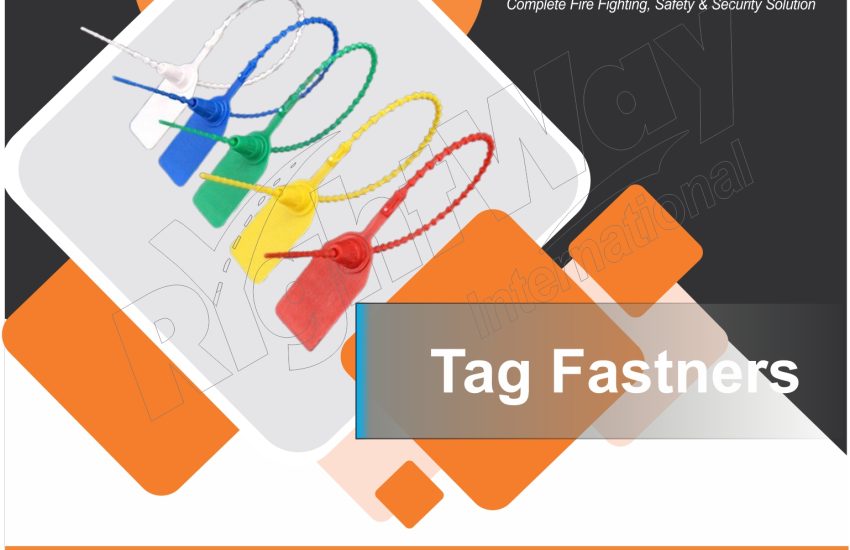Tag Fasteners are critical components in safety management systems, particularly in environments where equipment and machinery require clear identification and safety warnings. These fasteners securely attach tags to equipment, ensuring that important information about maintenance, hazards, or operational status is visible and cannot be easily removed. This article explores the significance of tag fasteners, their various types, and best practices for their use.
The Importance of Tag Fasteners
Tag fasteners play a vital role in safety and maintenance protocols by:
- Ensuring Information Visibility: Tag fasteners keep safety tags securely in place, ensuring that crucial information about equipment status, maintenance procedures, and safety warnings is always visible to workers.
- Preventing Tag Loss: By securely attaching tags to equipment or machinery, tag fasteners help prevent the loss or removal of important safety information, which can be critical in preventing accidents and maintaining compliance.
- Facilitating Compliance: Many safety regulations and standards require that safety tags be attached and clearly visible. Tag fasteners help organizations adhere to these requirements, reducing the risk of regulatory violations.
- Enhancing Safety: Proper use of tag fasteners helps maintain a clear and organized safety management system, which is essential for effective hazard communication and risk prevention.
Types of Tag Fasteners
- Plastic Fasteners:
- Description: These are commonly used for attaching tags to equipment and are typically made from durable plastic materials.
- Benefits: Lightweight, cost-effective, and resistant to various environmental conditions. Available in different designs, such as zip ties and self-locking straps.
- Metal Fasteners:
- Description: Made from metal materials like steel or aluminum, these fasteners are designed for more rugged applications.
- Benefits: Provides a secure and durable attachment, suitable for harsh environments where plastic fasteners may not be sufficient.
- Wire Fasteners:
- Description: These fasteners use wire to attach tags to equipment and are often used in combination with other fastening methods.
- Benefits: Flexible and strong, wire fasteners can be twisted or bent to secure tags tightly.
- Adhesive Fasteners:
- Description: These fasteners use adhesive backing to attach tags to surfaces. They are typically used for surfaces where traditional fasteners are not practical.
- Benefits: Easy to apply and remove, making them suitable for temporary tagging or labeling.
- Cable Ties:
- Description: Also known as zip ties, these fasteners are used to bundle and secure tags to equipment. They are often adjustable and come in various sizes.
- Benefits: Versatile and strong, ideal for securing tags in tight or challenging locations.
- Hook and Loop Fasteners:
- Description: These fasteners use a hook-and-loop mechanism (similar to Velcro) to attach tags securely.
- Benefits: Reusable and adjustable, allowing for easy attachment and removal of tags.
Best Practices for Using Tag Fasteners
- Choose the Right Fastener: Select a tag fastener that is appropriate for the environment and the type of equipment being tagged. Consider factors such as exposure to chemicals, temperature extremes, and mechanical stress.
- Ensure Proper Attachment: Make sure that tags are securely attached using the fastener and that they remain visible and legible. Avoid using damaged or worn fasteners, as they may not hold tags securely.
- Follow Safety Regulations: Adhere to industry standards and regulations related to tag placement and visibility. Ensure that tags are positioned in locations where they will be easily seen by all relevant personnel.
- Regular Inspections: Periodically check tag fasteners to ensure they are still securely attached and replace any that are damaged or compromised.
- Train Personnel: Educate employees on the importance of tag fasteners and proper tagging procedures to ensure that safety protocols are consistently followed.
- Maintain Tag Integrity: Ensure that tags are kept clean and free from obstructions to maintain their effectiveness and readability.
Conclusion
Tag fasteners are essential tools in maintaining effective safety tagging systems, helping to ensure that crucial information about equipment status, maintenance, and hazards is clearly communicated and easily accessible. By selecting the appropriate type of fastener and following best practices for their use, organizations can enhance safety, compliance, and operational efficiency. Proper implementation of tag fasteners not only helps prevent accidents but also supports a well-organized and effective safety management system.


